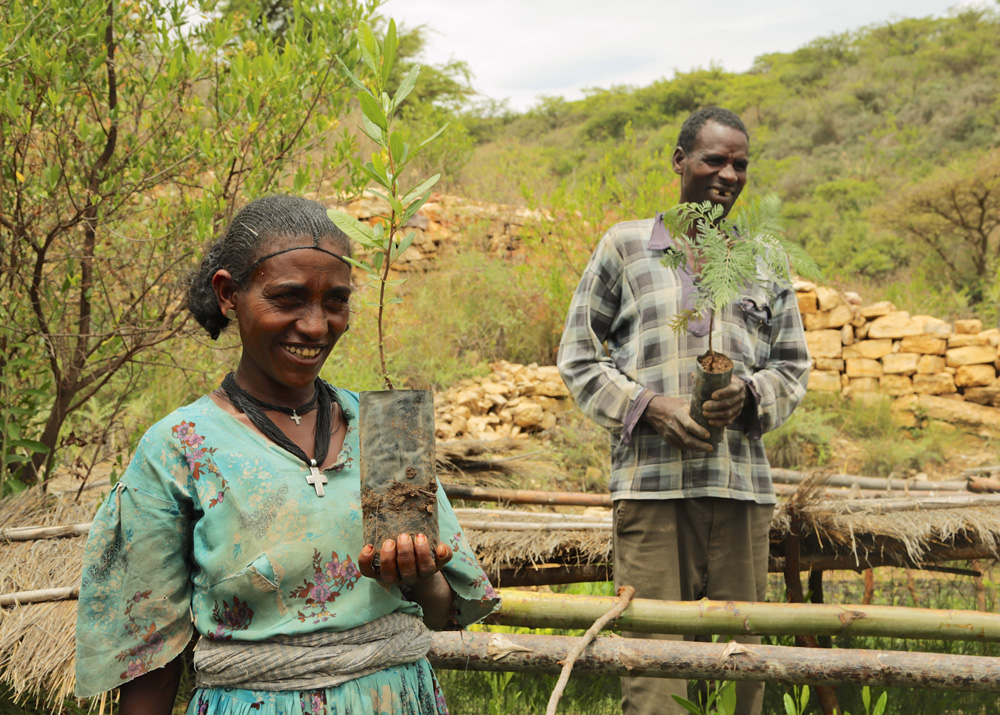Preliminary results from an ongoing review study presented at the Forests & Livelihoods: Assessment, Research, Engagement (FLARE) Annual Meeting 2018 in Copenhagen indicates the need to create and co-design cross-disciplinary research that includes and integrates ecological and social elements. Breaking silos by combining different fields in research projects is a major step towards realizing restoration potential at its fullest.
Forest restoration has the potential to advance social development, in addition to many environmental benefits. Agenda 2030 decrees that transdisciplinary research projects are necessary for arriving to a more sustainable future. And in the restoration arena, Forest Landscape Restoration (FLR) – the long-term socio-ecological development process introduced with the Bonn Challenge in 2011 – is the agreed way forward too. However, despite the general consensus that restoration efforts should regain ecological function while enhancing human wellbeing, research rarely includes both elements.
During the FLARE Annual Meeting 2018 Sarah Wilson (University of Connecticut) presented preliminary results from a study by PARTNERS Reforestation Network. This review study has been focusing on the extent social elements are integrated in forest restoration projects. Screening the existing body of research, this literature review aims to create a framework to guide other researchers to a meaningful integration of social with ecological, ensuring that restoration efforts are beneficial for ecosystems and for the people.
The results revealed the number of publications where ecologic and social elements are combined has become progressively greater over the last decade. There has also been a slight increase in publications on restoration with entirely social focus. Still, purely ecological studies have been produced at a much higher rate compared to social or cross-disciplinary studies. The literature review also showed that integration of disciplines often occurred at a later project stage, once work had been nearly completed, rather than through co-design from the start.
Preliminary, the few identified forest restoration projects, which integrate social and ecological elements through the entire project cycle indicate that compromises between the social and ecological parts are inevitable. However, even though, there may be some losses in scientific detail when combining disciplines, the efforts are likely to provide a more holistic approach and long-term benefits.
In her presentation Sarah Wilson also showed the most frequently used ecological and social terms in papers addressing both the social and ecological aspects of restoration. Frequently used social terms included indigenous, livelihood and “particip”, as in participatory and participation. Common ecological terms included ecology, habitat and carbon sequestration. One interesting observation is that specific technical ecological and social terms are rarely found in the same paper, proving the point that social scientists and ecologists rarely work in unison.
“From experience a few years back when I worked on my PhD project on forest restoration in Borneo, I did not come across any restoration projects that would include social elements,” says Focali member Malin Gustafsson.
Despite a clear gap, successful cross-disciplinary efforts exist, and a project from the Philippines presented by Denise M. Matias (German Development Institute) shed light on why integrating social and ecological restoration is of fundamental importance. This project links cultural tradition to practical forest restoration in an indigenous forest community in the UNESCO Man and Biosphere Reserve Palawan in the Philippines.
With the help from the local community Denise could map potential nesting sites of giant honey bees. She then used pollen analysis to create a snapshot of the floral biodiversity of the community forest to identify native “bee-friendly” tree species. When the results were combined, Denise got a list of tree species favourable for the bees, providing an advice for restoration well-tailored to this particular area.
According to Denise, the project shows that research can contribute to changes in practice and that projects on-the-ground are more likely to have a positive outcome if beneficiaries are given the opportunity to use their local knowledge in project design and implementation.
At the FLARE Annual Meeting there was consensus – we won’t be able to achieve our climate and sustainability goals without restoring degraded landscapes, but it is important that restoration efforts go in line with sustainability, aiming to regain ecological function and enhancing human wellbeing. Future research projects should therefore always consider co-design and cross-disciplinarity.
This way our future restoration efforts have a better chance to succeed.
